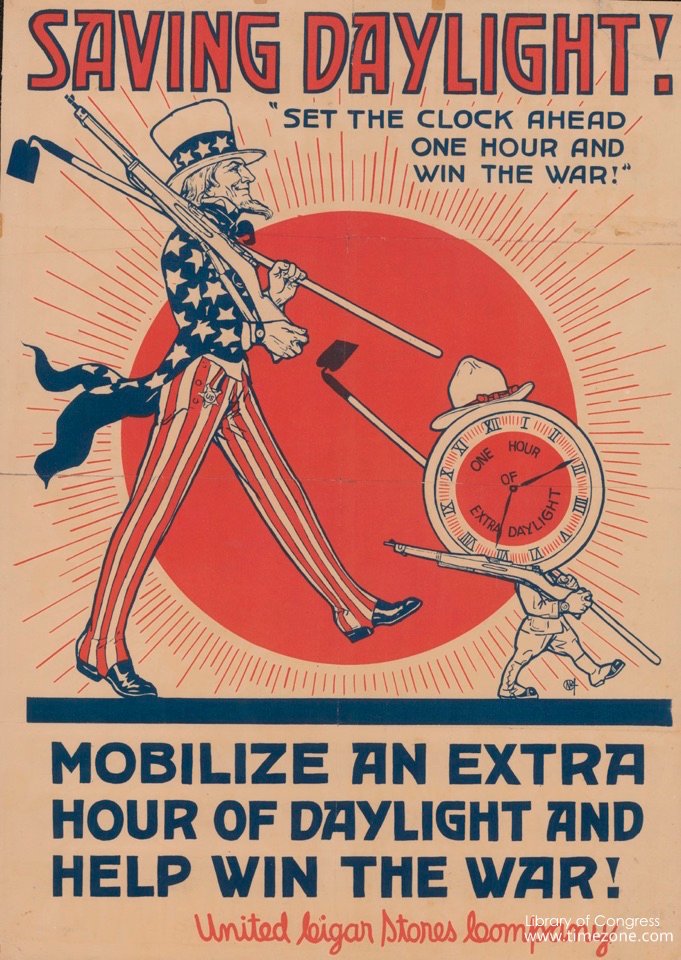This morning, 25th October, we all revelled in gaining an hour longer in bed thanks to Daylight Saving. But why do we still, in 2020, put the clocks forward in spring and back in autumn?
Daylight Saving was first proposed by Benjamin Franklin (one of the Founding Fathers of the US) who wrote about the notion in a satirical letter to the editor of the Journal of Paris in 1784. His argument was that more daylight would mean people wouldn’t waste candles by having to burn them for longer.
However, in Britain, the idea was first proposed by builder William Willett – the great-great-grandfather of Coldplay’s Chris Martin. Willett believed we should advance our clocks by 80 minutes via four incremental sets of 20 minutes during April which would then be reversed in the same fashion during September. He created the campaign “The Waste of Daylight” detailing his argument in 1907. His idea was championed by Winston Churchill and Sir Arthur Conan Doyle – but was initially rejected by the British government. Willet kept arguing for the concept up until his death in 1915.

Despite his campaign, Daylight Saving was not adopted in Britain until 1916 (a year after Willett passed away). It was only accepted in Britain after the German Empire first came up with the idea of turning clocks ahead by one hour in 1916 as a way of minimising the use of artificial light during daytime and therefore saving fuel. “They remembered Willett’s idea of moving the clock forward and thus having more daylight during the working hours,” explains David Prerau, author of ‘Seize the Daylight: The Curious and Contentious Story of Daylight Saving Time’. “While the British were talking about it year after year, the Germans decided to do it more or less by fiat.” Britain and France, and pretty much every country fighting in the war, then followed suit.

Since then, Britain toyed with moving the clocks number of times for example putting them 2 hours ahead during WW2. The clock was also brought forward for periods in the spring of 1947 in line with fuel shortages.


There was an experiment by British government between 1968 and 1971 which kept clocks an hour ahead all year round but the idea of daylight savings only became widespread during the 1970s energy crisis – where Britain then reverted to the current system we have now. In 1996, the EU finally unified countries under one system, European summer time – observed from the last Sunday in March to the last Sunday in October.
Despite the longevity of Daylight Saving, there are those that are starting to argue against changing the clocks as well as the likes of Brexit which may see Daylight Saving scrapped.
Some have campaigned for British time to be brought in line with other European countries to reduce accidents. For example, Errol Taylor, chief executive of the Royal Society for the Prevention of Accidents (RoSPA) said in 2019: “Clock changes were first introduced in 1916 to reflect the needs of a nation at war. However, our priority now should be the prevention of road accidents that cause serious injury and death. We know that clock change kills people. During the work week, casualty rates peak at 8am and 10am and 3pm and 7pm.”

Others want to keep Daylight Saving, particularly farmers and those living in Scotland. For example, Dr Dunn stated that it “concerns people in Scotland, where sunrise might not be until as late as 10am”. YouGov survey suggests that a slim majority of people are in favour of keeping daylight saving time, with 44% saying that they would prefer to keep the current system of switching the clocks forward and back twice a year, as against 39% who would like to scrap it.
On March 26 2019 European Parliament voted in favour of removing Daylight Saving in the EU permanently. If it’s passed by member states and becomes law, it means that EU countries will be changing their clocks for the final time in either March or October 2021, which would put an end to the twice-yearly clock changes. Royal Society for the Prevention of Accidents outlined that “This would mean road users will no longer experience the sudden onset of darkness during their autumn commutes, potentially saving many lives.”
Plans to abolish the clock changes across the European Union in 2021 have been put on hold because of the pandemic. With Britain now leaving the EU how it would work is tricky, for the result could be Northern Ireland and the Republic of Ireland having a different time despite being right next to each other. Britain will be able to decide what its stance will be, however, it’s more a question of when daylight saving is going to be scrapped than if.
What are your thoughts on Daylight Saving? Do you think we should bother putting the clock forward in spring to then put it back again in autumn? Should we just leave it and live by nature? Let me know your opinions in the comments

👌👌
LikeLiked by 1 person